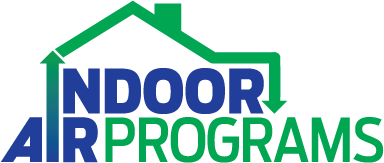“Alle Dinge sind Gift, und nichts ist ohne Gift; allein die Dosis macht, dass ein Ding kein Gift ist.“
PARACELUS (1538)
“All substances are poisons; there is none which is not a poison. The right dose differentiates a poison and a remedy.”
Industrial Hygiene and Indoor Air Quality
Traditionally, Industrial Hygiene focuses on protecting employees from hazards (potential sources of harm) in the workplace by assessing chemical, biological, physical, and ergonomic risks.
There is still a great deal of need for traditional IH practicing in manufacturing facilities, but as workplaces evolved, the types of hazards have also changed. Additionally, with both lifestyle changes and advancement in building technology over the last several decades, the need for identify and evaluate hazards in the indoor environment is more important.
At rest, the average person breathes in more than 8,000 L of air per day. The respiratory tract is the only organ system with vital functional elements in constant, direct contact-with the environment. The lung also has the largest exposed surface area of any organ. The surface size of lungs is thought to be 95 m². In comparison, the skin is 2 m² and digestive system is 10 m². Clearly, from an exposure perspective, the air we are exposed to and breathe will impact our health.
The inhalation of hazards and indoor air quality is not a new concept. What is emerging is the technology in which we can identify and/or quantify hazards and the numerous attempts to define what is a “healthy” indoor air quality. With indoor air quality outside of industrial type settings, the commonly identified hazards often do not have exposure guidelines. Mold, a common indoor air hazard, has no exposure guidelines and there is some level of mold in every indoor environment. The determination of what “amount” of mold is acceptable, thus, becomes merely an opinion. A simple internet search for mold will provide an entertaining number and variety of opinions.
Indoor Air Programs
Indoor Air Programs is not a generalized Industrial Hygiene practice. Indoor Air Programs specializes in indoor air quality. Specialization provides more experience, skills, and knowledge. Application of skills, knowledge and experience in a professional and ethical manner provides a logical professional judgment in lieu of an opinion.
Indoor Air Program’s mission is to protect and enhance human health by improving indoor air quality.
Human health, like indoor air quality, also has no definition of “good” human health. It is also opinion based. The opinion that is relevant is the individual’s. Thus, a primary objective of Indoor Air Programs is to understand the goals of indoor air quality in reference to human health for each client. This is a fundamental factor in providing the most appropriate service and associated costs for each client.
The Adaptability of Indoor Air Programs
Practicality
IAQ issues can often be complicated to solve and there is typically a sense of urgency to solve the issue. Additionally, an IAQ issue is not a “budgeted” item. No one plans for mold or other IAQ issues. There are many logistical issues associated with remediation project that need consideration. Practicality along with creativity and logic are used to adapt to each project.
Perseverance
There are no typical situations in IAQ cases. There are certainly common issues, but each situation is unique. It is not uncommon to have complexities that challenge the ability to find sources of issues and/or subsequent solutions. Critical thinking, creative problem solving, and innovation will eventually yield a solution. Along with not giving up on complex issues, remediation oversight services can ensure the project is successful.
Protection
Protecting occupant health is the foundation of any project and non-negotiable. The protection of our clients’ best interest, though adaptable, is also non-negotiable. Clients’ best interests can change when goals change. Through an effective communication strategy, Indoor Air Programs adapt as needed.
Personal
Simple problems do not need complex evaluations. In contrast, taking an IAQ situation too lightly can have severe consequences. Those that optimize human health have different expectations than others. Those that feel the building is impacting their health also have different expectations than others. Matching the severity of the issue, the level of optimization of human health, to the level of service creates a better experience.

Contact
Office: (513)334-6464
[email protected]
Location
1327 E Kemper Rd. Suite 3100 C
Cincinnati , OH 45246
